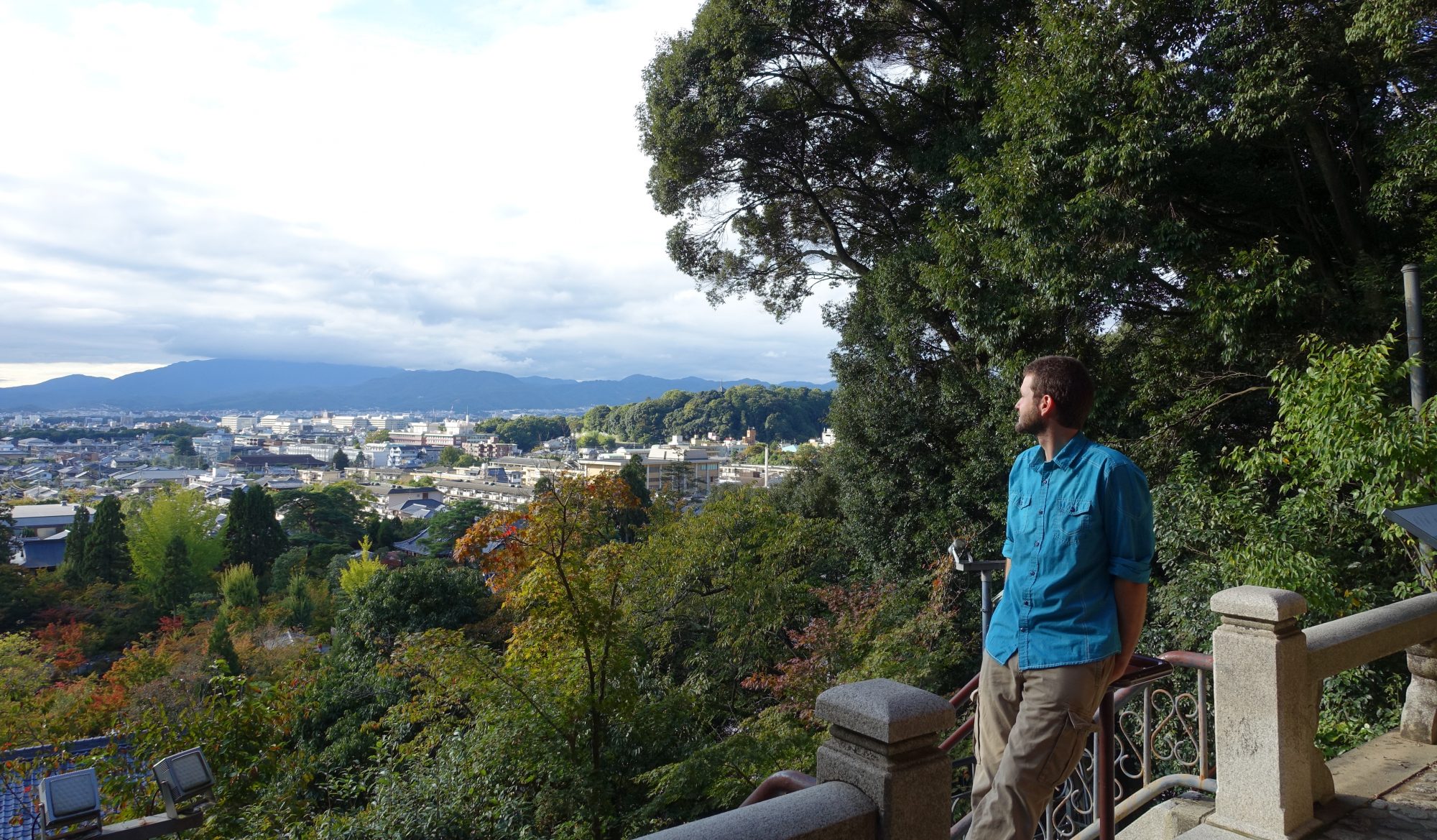The last thing I want to write about from our time in the Yucatan is visiting the cenotes. I saved this post for last because the cenotes were probably the memorable things about our time in the Yucatan and definitely the most unique thing about the area.
Okay, so what is a cenote? Well, it turns out that the entire Yucatan Peninsula is made up of a little bit of dirt and jungle sitting on top of a porous limestone foundation. A massive network of underground tunnels runs through this limestone. Through these tunnels, fresh ground water flows in slow-moving underground rivers to the sea. Cenotes are places where these rivers flow into a cavern, creating a lake that is accessible from the surface. Some are still mostly underground, and you have to climb down several flights of stairs to reach the water. Others had their ceilings collapse long ago and look simply like lakes or pounds, usually with a visible mouth to the underground crave system that feeds them. Each one we visited was surprisingly different, but the one thing they all shared was the water. Being fed by underground rivers, the water was clean, crystal clear, and refreshingly cool. While staying in Tulum, we visited nine cenotes, and I’m not going to write about every one. But I’ll take you through the highlights.
The first cenote we went to was Cenote Cristal. This one was a cavern that had long since collapsed, so today, it just looked like a small lake. It had a little diving platform (I think about 8 feet tall), so my first time at a cenote, I literally dove right in (don’t laugh at that, that was terrible). It was a beautiful place, located in the jungle, with fish and turtles swimming around, and baby basilisks running around at the water’s edge. But what was really memorable was seeing the water for the first time. It was clear, I mean, really clear. The bottom was supposedly 27 feet deep, and you could see it with perfect clarity (while wearing goggles, of course). Even tropically sea waters aren’t clear like this. It was pretty stunning.
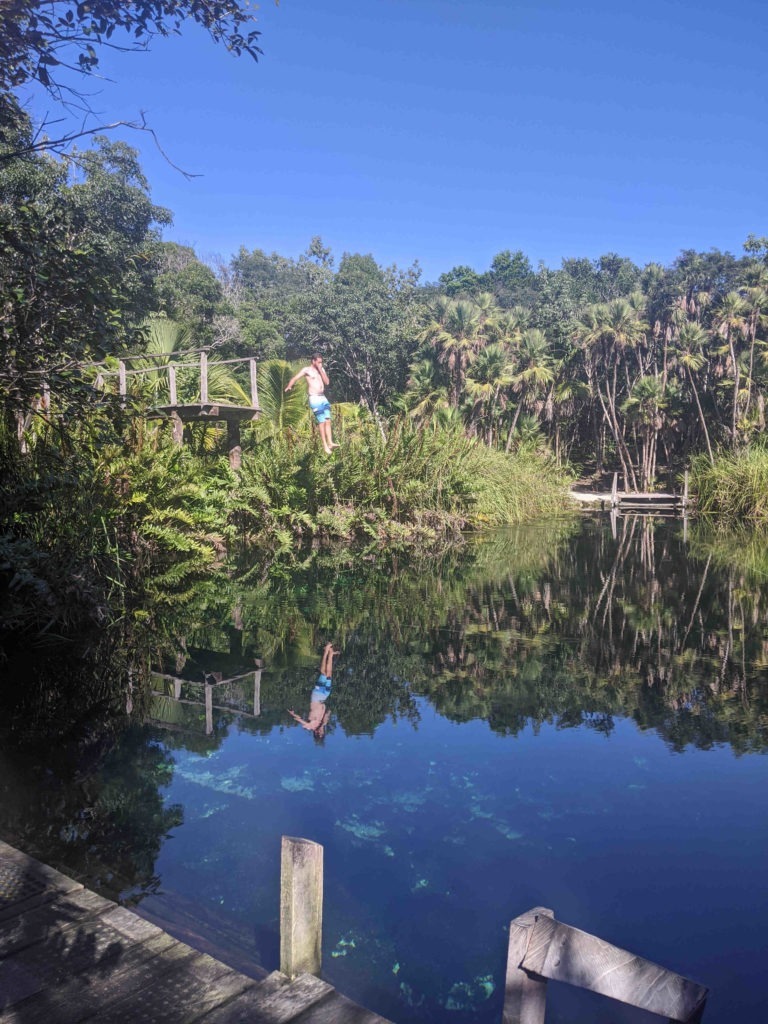
Taken by Elani
Dos Ojos was the first underground cenote that we explored. What made it memorable was swimming into the bat cave. We went with a guide because most of it is closed to snorkelers without one. To get to the bat cave, you had to swim, single file, between stalactites and stalagmites with about a foot of headroom above the water’s surface. The bat cave itself was a cavern with only a small hole in the ceiling. It was quite dark (we had flashlights), and as the name would imply, it had a colony of fruit bats who were sleeping on the ceiling or taking the occasional lap around the cavern. Swimming through caves and underground caverns was definitely a new experience.
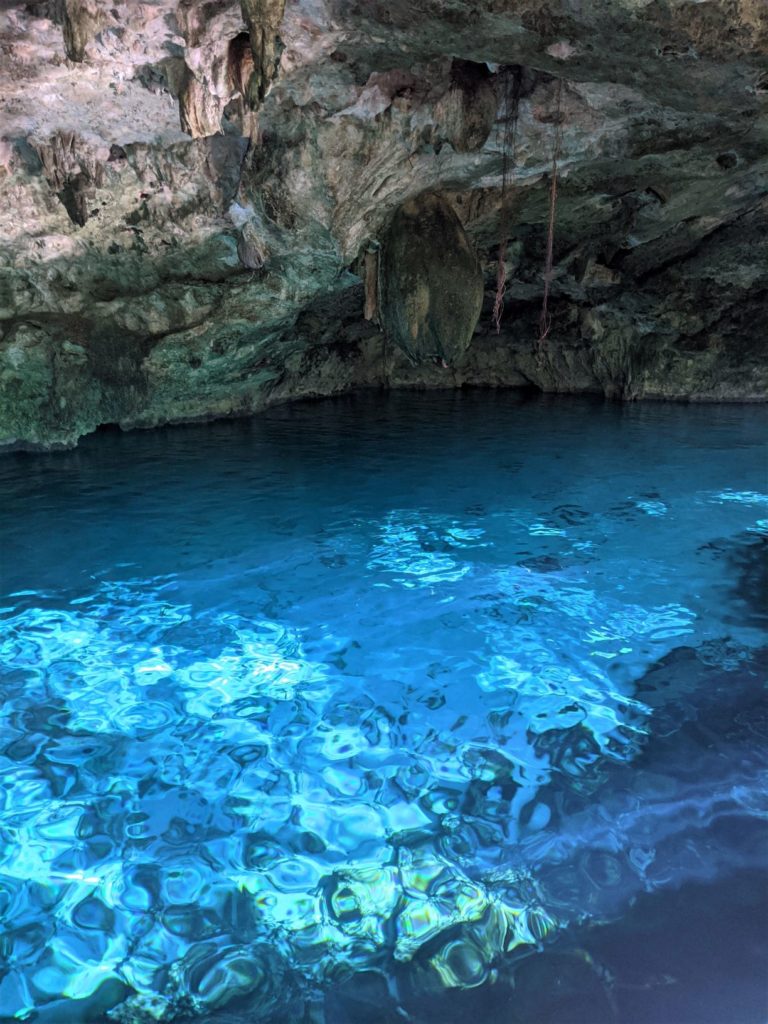
Taken by Elani
After exploring the Coba ruins (which you can read about here), we visited three nearby cenotes. Of those, the most impressive was Tankash-Ha. It is a huge round cavern and to get to it, you descend about 4 stories on a wooden stairway built in the center of the cavern. If descending a multistory wooden stairway of unknown age in a wet environment isn’t exciting enough for you, said platform also had two diving platforms. The lower one was about 15 feet above the water, and I’d put the higher at at least 25 feet. First of all, no, I most certainly did not dive off the taller platform. The lower platform was plenty high enough for me. I did dive off that one, twice actually, and that was plenty. Even at only 15 feet, messing up a dive can leave bruises, as Elani found out the hard way (nothing serious, she just let her legs tuck up on a pencil dive). While I was there, several other people went off the low platform, but no one went off the tall one. I was a little disappointed, but it was probably for the best. But Tankash-Ha wasn’t just impressive for the way it enabled you to make more diving-based choices; it was also the deepest cenote we went to. It went down at least fifty feet, and that’s not counting the big crack at that bottom that just trailed off into inky blackness. This cenote was not only the location of my highest jump, but also of my deepest dive. Like I said, this cenote was very deep, and I spotted a pair of goggles someone had dropped. They weren’t at the deepest point, but at a point roughly 30 feet down, and I decided I’d see if I could make it down to grab them. It took several tries. I worked my way down, going a little farther each time and seeing how if felt. After a while, I asked Elani (who was watching me) how close I was getting, and she said about 2/3rds of the way down. I thought about just giving up, since it was unnerving going down that deep, but I wasn’t running low on air, so I decided to keep going. The next try got me within a few feet. After enough of a rest to let my breathing return to normal, I made another attempt, and gave it that last push that let me get down to my target, grab the goggles and head back up. Being that deep is weird, let me say. Looking up through three stories of water and having only the air I brought with me is sort of a combination of terrifying and awe-inspiring. I’m glad I had a reason to swim down that far, but I’m not really planning doing it again anytime soon.
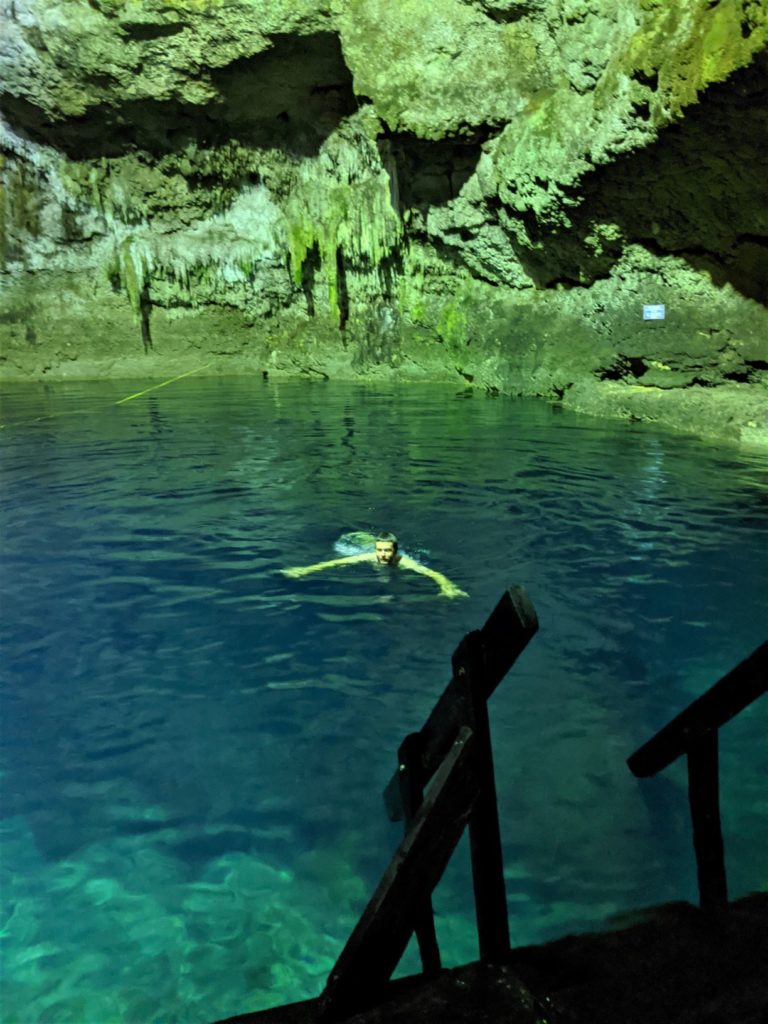
Taken by Elani
The most pleasant of the cenotes was probably Car Wash. I have no idea why it’s called that, it’s actual Spanish name is Ak Tun Ha. But everyone (including Google maps) calls it Car Wash, go figure. Anyway, as far as a pleasant place to go for an afternoon swim, it was hard to beat, and it was the only cenote we made sure to go to twice. In some ways, it wasn’t as stunning or bizarre as some cenotes, but it had lots of fish, turtles and lily pads to look at, its diving platform was at a more reasonable 8 feet, and it was fairly large, so didn’t feel too cramped to share with the other swimmers and divers that were there. It was one of the open cenotes, though you could swim down and look into a couple of cave openings. All in all, it was just a fun place to spend a couple hours and beat the Mexican heat.
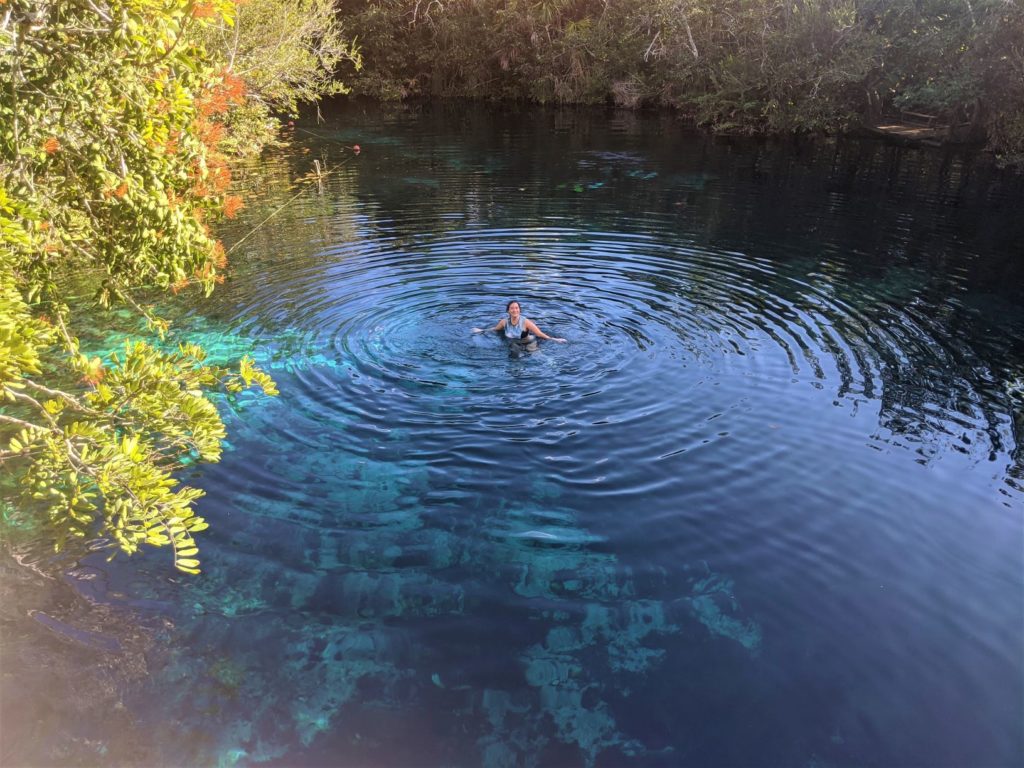
Taken by me
One of the last cenotes we visited, and really one of the oddest, was Yal-Ku. It is a place where the fresh underground rivers flow into the sea. From the surface, it looks like a marine lagoon, with a host of salt water fishes swimming in it. But once you are swimming around in it, you find out how weird it really is. There is a stream of cold, fresh water flowing up through cracks in the rocks at the bottom of the lagoon. Since the salt water is denser, the fresh water sits on the top, despite the fact that it is about 10 degrees (Fahrenheit) colder. So swimming through it, you see lots of heat distortion and if you dive down, the water is significantly warmer. Swimming down to be in warmer water is a weird sensation, I’ve got to say. Getting to experience something as weird as being in a mixing chamber of tropical sea water and underground river water is pretty cool, and getting to do it surrounded by colorful tropical fish is really something.
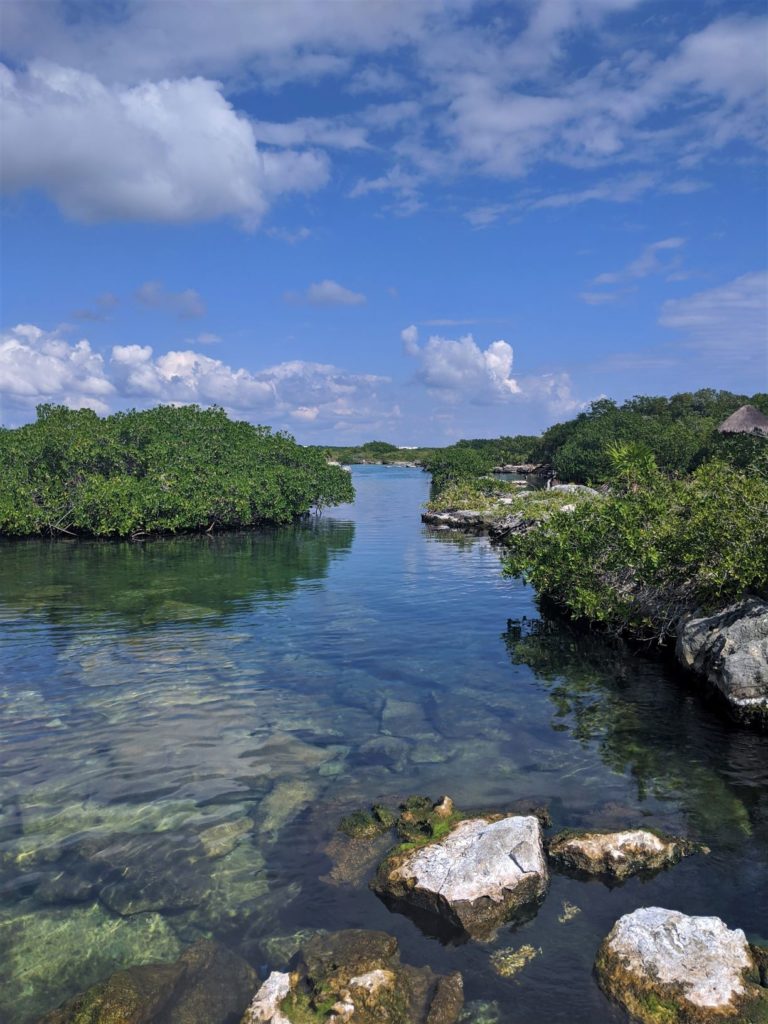
Taken by Elani
As I’ve traveled more and my perspective has broadened, more and more things I encounter don’t seem different so much as like a new variation on something I’ve seen before. Not that I’m complaining; seeing the unique variations from place to place is one of the joys of traveling. But it does mean that when you find something truly unique and different, it is mesmerizing. And I have to say, the cenotes of the Yucatan are really unlike anything I’ve experienced before.
